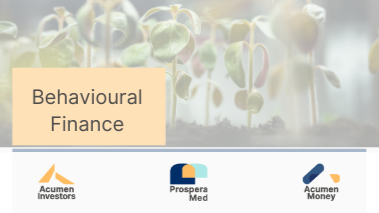Big Five and Neuroplasticity

Extraversion and the overconfident investor
Consider this example: Ed tends to take trading positions when he gets positive signals from share-price charts. He has had successes in the past following these signals but wants more consistent performance. On reflection of trades that hadn't worked. Ed is aware that he is an optimistic person, is assertive about what he believes in and does not hold back in backing his own convictions. On reflection, he realises that it is the dominance of this extraversion dimension that has caused some of these negative results. If left unchecked, it will continue to push him to trade to be proven right with undue optimism and overconfidence. This personality dimension is cheered on by the flush of feel-good neurochemicals in the brain such as dopamine and oxytocin, as optimism feeds into more actions and greater (false) confidence. For more consistent performance Ed is aware that he needs to keep his optimism and confidence in check so it does not create bias in his decisions. Often the injection of a rational reality check is sufficient to break the impulse circuitry in the brain and stop the continuous production of the feel-good neurochemicals and the overstimulation of the brain.
Neuroticism and the overly cautious investor
Most investors agree that a healthy dose of cautiousness is required when it comes to investing. After all, it is a good dose of neuroticism (like the fear or emotional pain of losses) that will be an effective antidote to the highly extraverted individuals. But what is a healthy level of neuroticism? Someone who does not have a healthy, moderate level of neuroticism gets tense easily, is quick to be affected emotionally by negative news and is naturally very pessimistic. As an investor, this translates to being overly cautious and protective to the extent of forgoing greater performance. This may be an investor who prefers the safety of cash in the bank despite evidence of improving economic fundamentals. This may also explain investors who lament always "buying at the top" or "selling at the bottom". This often transpires from an investor's initial holding back from a rational, logical decision, blurred by the intensity of fear emotions.
Unfortunately, this seemingly protective emotional judgement which overwrote logic has the tendency to push the investor to the opposite direction when emotions finally overwhelm. The investor then jumps in to buy when stocks have rallied strongly or sell when the bearish trend is about to come to an end. Protecting ourselves from harm and pain is natural to who we are. We are made with a gland in our brain called the Amygdala, whose job is to protect us from danger or physical harm. It is made to fight or flight or freeze when danger is sensed. Unfortunately, when it is in overdrive (as in those with a high dose of neuroticism) decisions are overwritten by this engineroom of fear. What do we do if we have this tendency? Being aware of the tendency of the protective Amygdala overruling logic helps prevent us from making decisions because of irrational fear. The automatic reactions to freeze (do nothing) or flight (flee from share to the safety of cash when we shouldn't) can be overwritten consciously by the executive brain when we realise they are merely impulsive reactions motivated by illogical fear emotions.
Being Agreeable, Conscientious and Opened
There are those who are friendlier, like to be accepted, avoid conflict at all costs and inherit a high level of agreeableness. When it comes to investing, this group may just be more easily influenced by tips from friends, "expert" views and simply doing what their peers do. The antidote for this group of investors is a good dose of conscientiousness, those who do their own analysis, meticulously and methodically without merely relying on what others say. On the other hand, an overly conscientious investor will be subject to the problem of "paralysis by analysis", paper trading without backing their own analysis with real money and watching methodical, rational scenarios outperform, only on paper. Both traits in overly high dosages detract from performance. What about openness, the last of the five factors? This is the only factor that investors can comfortably have in high dosages yet enhance performance. An investor who is high in openness is open to and embraces new ways of thinking, investing, evaluating assumptions and accepts one's own mistakes. Being open to new ideas and changes may just be the best defence for an investor operating in investment markets that continually change and evolve.
Neuroplasticity is key to adaptive investing
Why are we who we are? These dimensions and its dosage may be natural, learnt or adopted along the way.
Experience is one big cause, while the stage of life plays the other part.
Having a quick snapshot of your money personality is only the first step. The key message is, that whatever our Big Five factors are right now, they are adaptive and our brain is plastic. They are adjustable and our brain can learn to react in new ways.
Adapt your money personality to improve performance.


